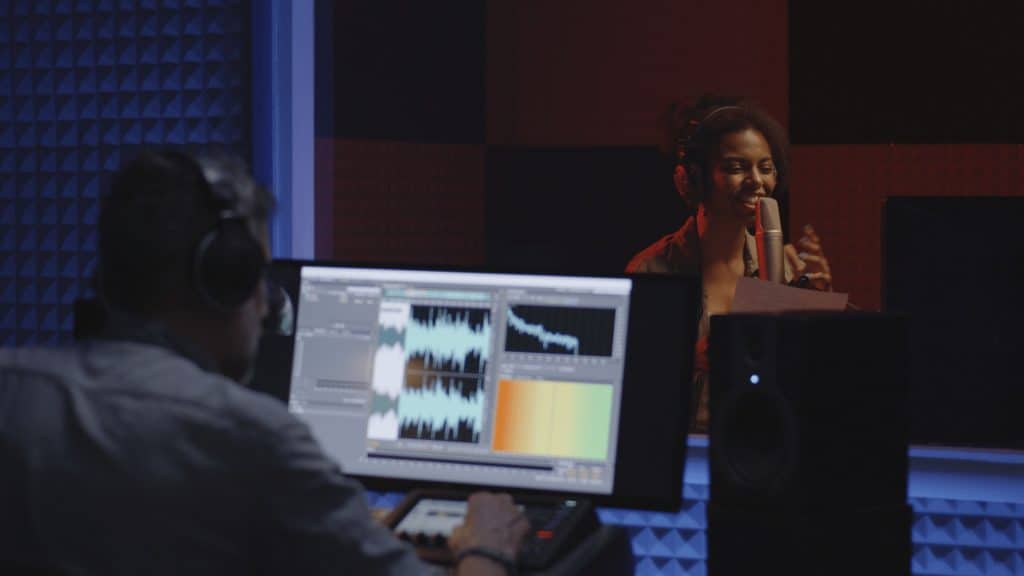|
Listen to Post
|
Listen to this article now:
Video content marketing is one of today’s most popular content marketing trends. But what happens when you have created your video in a specific language and want to reach other foreign markets with it? Then the answer is video localization. Keep reading this article and find out why and how to localize your video content, to successfully reach your international audience.
Why is video content so powerful?
- For one, people love videos. They are the most popular way of consuming content because they are so easy to digest. Although written content can be effective for many audiences, video and visuals are far more powerful than text. The human brain processes images almost 60,000 times faster than text and remembers 90 percent of a message when it is watched instead of only 10 percent when it is read.
- Your message gets across quickly and effectively. You can “show and tell” at the same time, allowing your audience to better understand your product or service and take in even the most complex information and ideas.
- Video grabs attention usually within 5 seconds and it can increase engagement if it manages to get your audience hooked.
- It also works beautifully on social media platforms. Compelling videos expand the viewers’ attention span and makes them stay on the page longer, which means higher rankings on Google searches.
- Video content is also one of the most sharable types of content, with people tending to share videos twice as much as any other type of content.
Why localize your video content?
So given that multimedia content is a powerful tool to raise your online profile and showcase your brand, when you choose to localize it, you go for an even greater reach, targeting the largest possible audience.
Approximately 80% of the world population is not proficient in English and being able to access information in their native language is sometimes more important that cost when deciding on a purchase. So, localizing your video and adapting it to the local language and culture, better caters for your international customers, increasing accessibility and creating more personalized and immersive experiences.

How to localize your video content and address new markets?
Define your target market
Start by defining your targeted market and understanding your audience. Analyze their features and particularities. See where there is traction and where do people engage with your services and products. This will help you recognize where the biggest opportunities lie.
Map out your content
Continue by mapping out your content, to decide where to start and how far to go. Will you localize your entire content or focus on what you think will gain more ground? Which languages will you go for and with which languages are you going to start. This process will help you decide on a localization strategy that will help you go global and give you return on investment.
Pick the right video localization method
Then, most importantly, pick the right method to localize your video. There are different ways of doing so, so you must understand your options, what purposes they serve and if they match your viewers preferences. Here are the main tools and services offered:

Subtitling
With subtitling you add text to your media to convey the spoken message. Subtitles work well in social media platforms when people often want to view videos muted, for example when being in public places. They are also the quickest and less expensive way of providing content into different languages and can be distinguished into two main types:
- Burned-in subtitles are open, permanent, and always visible. They display on the lower part of each screen and are time-coded so that they match what is taking place on-screen.
- Closed subtitles (captioning) are hidden until you select them and can include non-spoken elements like sounds and music. Speech can be translated either within the source language or into different languages, catering for the deaf and hard of hearing.
For more information on closed captions and subtitles, read our article Closed Captions vs Subtitles: What’s the Difference?
Subtitle localization workflow
Here are the steps of a typical subtitle localization workflow:
- A script is created based on the video file.
- A subtitle file is then created in the source language with the appropriate time codes (time-in and time-out) and formatting (captioning).
- The time-coded file gets translated into the target languages, suitably adapted and following applicable time and length rules.
- Finally, the translated script is embedded into the video in order to test appropriateness, ensure correct “cut-in” and make any needed corrections.

Voice-over
Voice-over or off-camera commentary is the process of translating narrative scripts and then having them recorded by voice actors.
It is used in animation films, video games, documentaries and other types of media and works well for videos not focusing on talking heads and dialogues. Voice-over aims to convey the message or speech to a new audience, focusing on the essence of the audio information, without having it translated word-for-word.
It can be done in different ways. In UN-style voice-over, the original voice is kept at a low volume and the voice actor’s is recorded on top, whereas in narration, the translated recording completely replaces the original voice. In dubbing the translated narration is lip-synced with the on-screen actors, and here the word choice during script translation is critical.
Voice-over localization workflow
Here are the steps of a typical voice-over localization workflow:
- A source time-coded script is created based on the video file.
- Then the script is translated into the languages needed. Translations are usually not verbatim, but rather a summarized version of the content.
- Once translation is ready with text expansion issues tackled as much as possible via suitable adaptation, the appropriate voice talents who will be reading and recording the translated script must be selected.
- Then the actual voice recording follows. The voice talents, supported by high quality equipment, record and re-record the voiceover, adjusting the speed of speech or requesting small adaptations to the script.
- Finally, the video is synched to the audio by the localization engineer.
For more information on video dubbing and subtitling, read our article Differences between video dubbing and subtitling.

The video localization method to choose depends on many parameters: your target audience, your type of content, the budget etc. Our friendly team of video localization project managers can navigate you through the whole process and make sure you choose the optimal method for your business. Contact us now!








